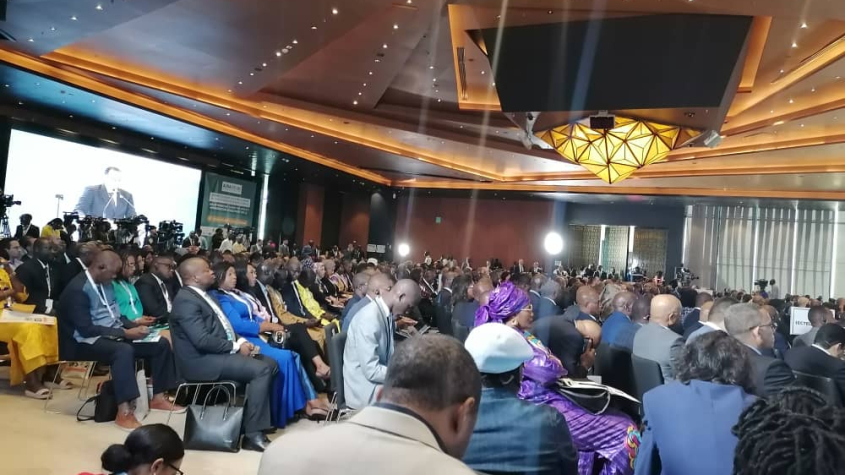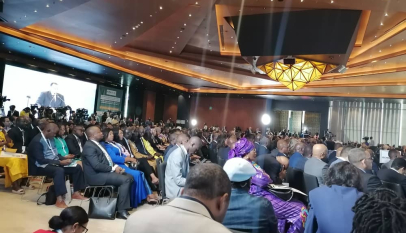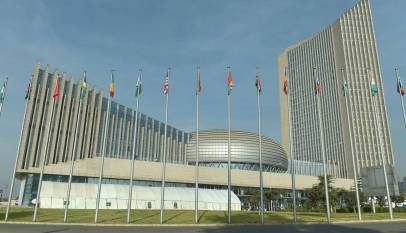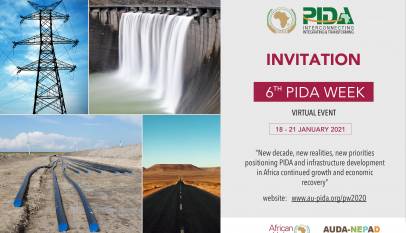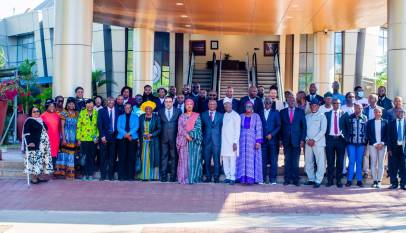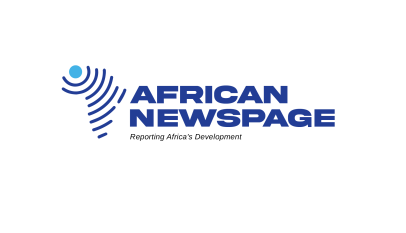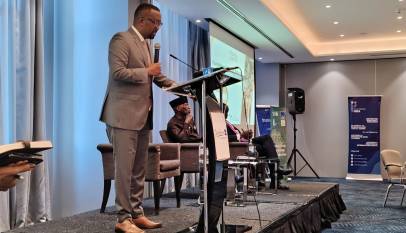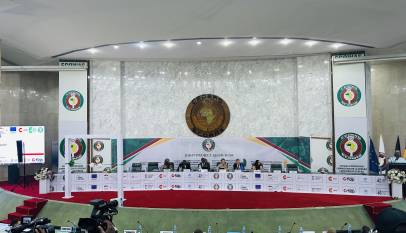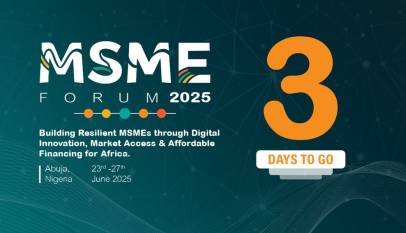DFS-2: Catalyzing Public-Private Partnerships for Africa’s infrastructure development
To mobilize the collective support of governments, the private sector, financing institutions, and development partners for the Programme for Infrastructure Development in Africa’s 2nd Priority Action Plan (PIDA PAP2) projects, Republic of Senegal last week hosted in its new city of Diamniadio the 2nd Dakar Financing Summit for Africa’s Infrastructure Development (DFS-2).
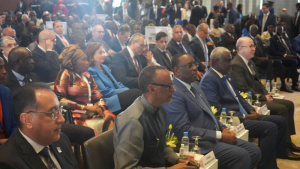
The Programme for Infrastructure Development in Africa (PIDA) is the strategic masterplan for transforming Africa’s infrastructure as a means to strengthen the continent’s competitiveness and integration into the global economy. An initiative of the African Union Commission, the New Partnership for Africa’s Development (NEPAD), and the African Development Bank (AfDB), PIDA was launched in 2010 on the sidelines of the 16th African Union Heads of State and Government Summit in Kampala, Uganda.
In 2012, the AU Assembly of Heads of State and Government adopted PIDA along with its 1st Priority Action Plan (PIDA PAP-1), covering the period 2012–20. Subsequently, the 1st Dakar African Infrastructure Financing Summit (DFS-1) was held in 2014 to find strategies for accelerating Africa’s infrastructural development, culminating in the adoption of the Dakar Agenda for Action (DAA), aimed at leveraging public-private partnerships for infrastructure transformation.
In 2021, the AU Assembly adopted the 2nd PIDA Priority Action Plan (PIDA PAP II), a $160 billion-worth basket of 69 projects covering four key sectors: energy, transportation, water, and ICTs, to be implemented over the period 2021–30. To mobilize the collective support of governments, the private sector, financing institutions, and development partners for PIDA PAP2 projects, Senegal last week hosted in its new city of Diamniadio, the 2nd Dakar Financing Summit for Africa’s Infrastructure Development (DFS-2).
Themed: “Keeping the momentum for continental infrastructure transformation,” DFS-2 brought together African Heads of State, Regional Economic Communities (RECs), the private sector, Development Finance Institutions (DFIs), Multilateral Development Banks (MDBs), institutional investors, and development partners. It therefore sought to catalyze public, private, and mixed-funding for PIDA PAP 2 projects from governments, the private sector, development partners, and financial institutions.
Thus, the Summit featured boardroom sessions where action plans for select projects were presented to garner the support of DFIs and MDBs, with African ministers responsible for finance, economic development, infrastructure, transport, energy, water, and ICTs, also in attendance. By fostering discussions between policymakers, investors, and financiers, DFS-2’s deal rooms provided a viable platform for enhanced understanding of the opportunities, risks, and obstacles of the projects’ implementation.
Some of the projects presented to investors and financiers at the sessions were the LAPSSET Corridor’s Railway Project, which seeks to boost the transport of goods and people between landlocked Ethiopia and South Sudan and the Lamu Port in Kenya; the Abidjan– Lagos Corridor Highway, linking Côte d’Ivoire, Ghana, Togo, Benin, and Nigeria. Other projects were the Amilcar Cabral Submarine Cable Project, the Navigational Line between Lake Victoria and the Mediterranean Sea (VICMED); and the Angololo Multipurpose Water Resources Development Project, among others.
“We need innovative infrastructure financing systems,” says AUDA-NEPAD’s CEO
While setting the tone for discussions, Ms Nardos Bekele-Thomas, CEO of AUDA-NEPAD, described bridges, roads and railways as the lifelines of all economies, hence, regional trade and integration will not be enhanced without infrastructure. Therefore, the AUDA-NEPAD chief said the continent had set out to improve its infrastructure, including reducing its energy deficits, particularly electricity.
“Despite our best efforts, it is disheartening to note that more than 600 million Africans remain in the dark. At a national level, countries like South Africa are facing an energy crisis that costs the country between $86 and $230 million a day, depending on the intensity of power cuts. Other countries in the Sahel region, like Chad, have among the lowest rates of access to electricity in Africa and the world, with less than 10% of Chadians having access to the national grid,” she decried.
While speaking about Africa’s transport infrastructure deficit, Ms. Bakele-Thomas described as “shameful and frustrating” the paradox of Africans still having to connect through Dubai and Paris to travel within the continent, adding that whereas African airlines are restricted and crowded out of business within the continent, foreign airlines enjoy unfettered access to Africa’s skies. She also decried the absence yet of a bridge linking the capitals of Congo Brazzaville and Congo Kinshasa, which limits socio-economic activities among the two countries.
“Taking cognizance of the gravity of these issues and the general inadequacy of traditional sources of finance for Africa’s infrastructure, it is high-time we adapt the best practices of the global infrastructure financing landscape. Already, countries such as Ethiopia, Senegal, Cote d’Ivoire, Rwanda and Egypt have mitigated the shortcomings of the current funding architecture and the limitations of Africa’s debt as a percentage of GDP by diversifying their infrastructure funding sources. We need to take lessons from countries that have tapped into innovative sources of funding to finance infrastructure projects,” she urged.
“Lack of political will responsible for Africa’s poor infrastructure,” says AUC Chairperson
In his remarks, Moussa Faki Mahamat, Chairperson of the African Union Commission (AUC), described said the structural transformation of African economies, acceleration of continental integration, the improvement of the competitiveness of African economies, boosting of intra-African trade as well as increasing industrial and agricultural productivity, were all hinged on modern and quality infrastructure.
“The state of play shows that Africa is lagging considerably behind in this sector, which results in a shortfall in economic growth estimated at 2% per year. The African Union’s Agenda 2063 proclaimed this in a structured, precise and clear manner. The delays occasioned by the size of the deficits and the slow pace of progress are obvious in the transport sector, particularly roads, ports, railroads and, even more so, in electrification, water and information technology. We are losing 40% of our productivity because of this infrastructure deficit,” Mr Mahamat said.
The AUC chief said only 38% of Africa’s population has access to electricity, less than 10% of the continent’s population is connected to the internet and only 25% of Africa’s road network is paved, which calls for a large-scale investment in productive infrastructure to reverse this trend. To this end, he said the AU has evolved a number of initiatives aimed at improving the continent’s infrastructure, adding that it was therefore not a lack of initiatives but rather a dearth of political will to implement the initiatives that was responsible for Africa’s poor infrastructure.
“Certainly, our delays cannot be explained by the lack of various African initiatives. Is it not time to look for answers within ourselves, i.e in the lack of political will, innovation in governance and vision in the creation of our destinies? Infrastructure does not fall from the sky. They are conceived, planned and implemented with transformative determination. All those who have built them in Asia and Latin America, and before them elsewhere, have followed this path, it is the only one leading to the fulfillment of ambitions.”
Mr Mahamat noted that 80% of Africa’s infrastructure is currently financed from public resources, which is constrained by reduced government revenues, hence the urgency for mobilization of resources through both the African and international private sectors. In this direction, he said the AUC had sought to remove inherent obstacles in the implementation of some PIDA projects, resulting in progress for projects such as the Lagos – Algiers Trans-Sahara Highway (the African Unity Road); the SADC North-South Corridor; and the pan-West African fiber network.
“We must imagine and invent new instruments, models and financing scenarios to meet the estimated needs of between $130 and $170 billion per year. We need to explore further the idea of innovative partnerships, pension funds and sovereign wealth funds. By involving our sovereign wealth funds and pension funds more strongly in the long-term financing of our bankable infrastructure projects, we will demonstrate our desire to take ownership of our destiny,” he assured.
“My experience of six years at the head of the African Union Commission has definitely convinced me of the need to rely first and foremost on our own strength. We have had enough of the promises and figures that are repeated at conference after conference and at international forums. Isn’t it time to get a grip on ourselves? Isn’t it time to wake up? Isn’t it time, in short, to realize that our self-construction will only ever come from our own redemption, from our emancipation from this unbearable dependency on others,” Mr Mahamat concluded.
“Unfair ratings increasing Africa’s infrastructure investment risks,” says AU Chairman
President Macky Sall of Senegal, now chairman of the African Union, described infrastructure as a major enabler of economic integration in his keynote address, lamenting Africa’s high deficit in both physical and digital infrastructure, prompting the creation of initiatives such as PIDA and the Africa 50, which seek to bridge Africa’s infrastructure funding gap by mobilizing public and private sector financing for investment in infrastructure.
“Despite our structural challenges and the effects of the Covid-19 pandemic, Africa is under construction. For instance, with a loan from the AfDB, Senegal and Gambia joined forces to build the Senegambia Bridge over the Gambia River in only 4 years. The Senegambia Bridge is a 40-year-old project that we have thus far completed since January 2019, ensuring the smooth flow of traffic between the two countries, and to the southern regions of Senegal.
“In November 2021, Senegal and Mauritania launched the construction of the Rosso Bridge over the Senegal River, which will be completed in 30 months, with the assistance of the AfDB, the European Union and the European Investment Bank. This bridge which is part of the African integration process, is an integral part of the Tangier-Casablanca-Nouakchott -Dakar-Abidjan-Lagos corridor. There are similar efforts to build integrated infrastructure elsewhere on the continent,” the AU Chair told DFS-2 delegates.
President Sall said although the continent’s progress in building infrastructure was tangible, it was not devoid of challenges, particularly funding deficits. He also acknowledged that the Covid-19 pandemic had slowed down the continent’s infrastructure investment due to the slowdown in economic activity and the rededication of public spending towards public health.
“But even without these cyclical difficulties, Africa has always paid dearly for its projects because of high interest rates. For such long-term infrastructure financing, our countries are often required to repay their debts within a short period of time, with a few exceptions. At the same time, the problem of financing will remain unresolved due to the rules and practices of global economic and financial governance, which hinder our countries’ access to substantial resources on equitable terms,” the AU chairman complained.
Thus, Sall said throughout his tenure at the helm of the AU he had consistently raised the unfair ratings of African countries by credit rating agencies, which tend to always exaggerate Africa’s investment risks in global forums such as the OECD, G7, G20 and the United Nations, on the conditions for financing infrastructure in Africa. He thus urged Africa to sustain its advocacy for the reform of the global financial architecture while also addressing the planning and technical engineering aspects of projects to make them bankable.
“For example, 61% of the 69 projects in PIDA’s 2nd Priority Action Plan have not yet undergone feasibility studies to attract private investors. There is a need to create synergy between multilateral development banks, development banks, technical and financial partners, as well as the PIDA Readiness Fund and NEPAD’s Project Preparation Facility, to improve the feasibility studies of priority projects,” concluded the Senegalese president.
“Infrastructure key to operationalizing AfCFTA,” says President Kagame
In his remarks, President Paul Kagame of Rwanda, Chairperson of NEPAD Heads of State and Government Orientation Committee (HSGOC), said the implementation of PIDA projects will help Africa build world-class infrastructure adding that AUDA-NEPAD was already assisting African countries to fast-track high social impact projects under PIDA- PAP 2. He said whereas Africa has made good progress over the years, the continent’s infrastructure gap remains significant.
“To close this gap for good, mobilizing domestic resources is very critical. This is why, in 2017, AUDA-NEPAD launched the 5% Agenda on Increasing Institutional Investment in Africa’s Infrastructure. This summit is an opportunity to add to this funding mix by partnering with the private sector to make our infrastructure projects even more bankable. Having inclusive, reliable, and sustainable infrastructure, is not an end in itself. For Africa, it means reducing the cost of doing business, boosting regional trade, and becoming more resilient against future shocks,” the Rwandan president urged.
President Kagame said bridging Africa’s infrastructure deficit is a means to create prosperity for the African people, noting that building Africa’s infrastructure requires close collaboration between governments and the private sector. He said building infrastructure will also help the continent fully operationalize the African Continental Free Trade Area (AfCFTA) as part of Africa’s grand vision to build a secure and prosperous continent as outlined in Agenda 2063.
DFS-2 calls for accelerated private investment in Africa’s infrastructure
The climax of DFS-2 was the issuance of the Dakar Declaration on Synergies of Action for Infrastructure Financing in Africa, which called on African countries to strengthen their risk mitigation systems so as to accelerate private infrastructure investment; and called on investors, technical partners, and financial partners to support the countries in raising the necessary resources to make their infrastructure projects bankable. The Declaration also called on the private sector, and institutional investors, such as sovereign wealth funds and pension funds, to invest in PIDA projects.
The Summit further called for leveraging innovative financing models, such as climate finance, green bonds and diaspora bonds, establishment of a Multi-Donor Trust Fund to be funded by AU countries, development partners, DFIs, the private sector and MDBs while calling on the AfDB to make better use of its African Investment Forum (AIF) to attract investment for PIDA PIDA 2 projects. AUDA-NEPAD was requested to establish a mechanism for follow up on the implementation of the DFS-2 outcomes, while the upcoming AU Assembly to include the outcomes in its agenda.

